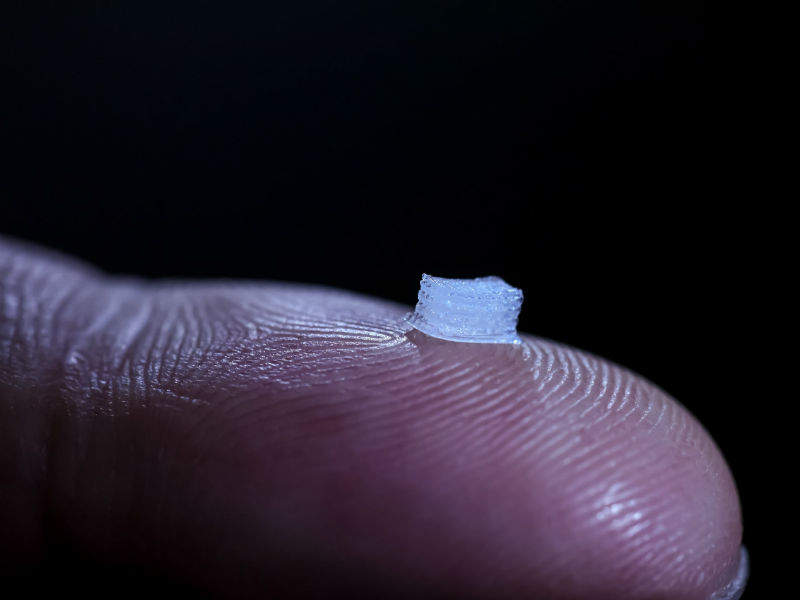
Engineers and medical researchers at the University of Minnesota have created a 3D-printed device that could help patients with long-term spinal cord injuries regain some function.
The device is a 3D-printed guide, made of silicone, which serves as a platform for specialised cells that are then 3D printed on top of it. The guide could be surgically implanted into an injured area of a patient’s spinal cord where it would act as a bridge between the living nerve cells above and below the area of injury. The researchers think this could help alleviate pain for patients as well as aid them in regaining some functions like control of muscles, bowel and bladder.

Discover B2B Marketing That Performs
Combine business intelligence and editorial excellence to reach engaged professionals across 36 leading media platforms.
The engineers print neuronal stem cells on to a silicone guide using 3D-printing technology which is able to print both the guide and the cells. The guide keeps the cells alive and allows them to change into neurons.
The research has been published in the online journal Advanced Functional Materials.
Dr Michael McAlpine is the University of Minnesota Benjamin Mayhugh associate professor of mechanical engineering and co-author of the study. He said: “This is the first time anyone has been able to directly 3D print neuronal stem cells derived from adult human cells on a 3D-printed guide and have the cells differentiate into active nerve cells in the lab.”
University of Minnesota Medical School assistant professor and the other co-author of the study Ann Parr said: “This is a very exciting first step in developing a treatment to help people with spinal cord injuries. Currently, there aren’t any good, precise treatments for those with long-term spinal cord injuries.”

US Tariffs are shifting - will you react or anticipate?
Don’t let policy changes catch you off guard. Stay proactive with real-time data and expert analysis.
By GlobalDataAround 285,000 people in the US suffer from spinal cord injuries, with about 17,000 new spinal cord injuries occurring across the country each year.
During the process developed by the University of Minnesota researchers, bioengineering techniques are used to reprogram any kind of adult cell into neuronal stem cells.
Parr said: “Everything came together at the right time. We were able to use the latest cell bioengineering techniques developed in just the last few years and combine that with cutting-edge 3D-printing techniques.”
Using the latest technology did not make it any easier to develop the prototype guides.
“3D printing such delicate cells was very difficult,” McAlpine said. “The hard part is keeping the cells happy and alive. We tested several different recipes in the printing process. The fact that we were able to keep about 75% of the cells alive during the 3D-printing process and then have them turn into healthy neurons is pretty amazing.”
If the next steps in the development process are successful, the device could be life-changing for those who suffer from spinal cord injuries.
Parr said: “We’ve found that relaying any signals across the injury could improve functions for the patients. There’s a perception that people with spinal cord injuries will only be happy if they can walk again. In reality, most want simple things like bladder control or to be able to stop uncontrollable movements of their legs. These simple improvements in function could greatly improve their lives.”





